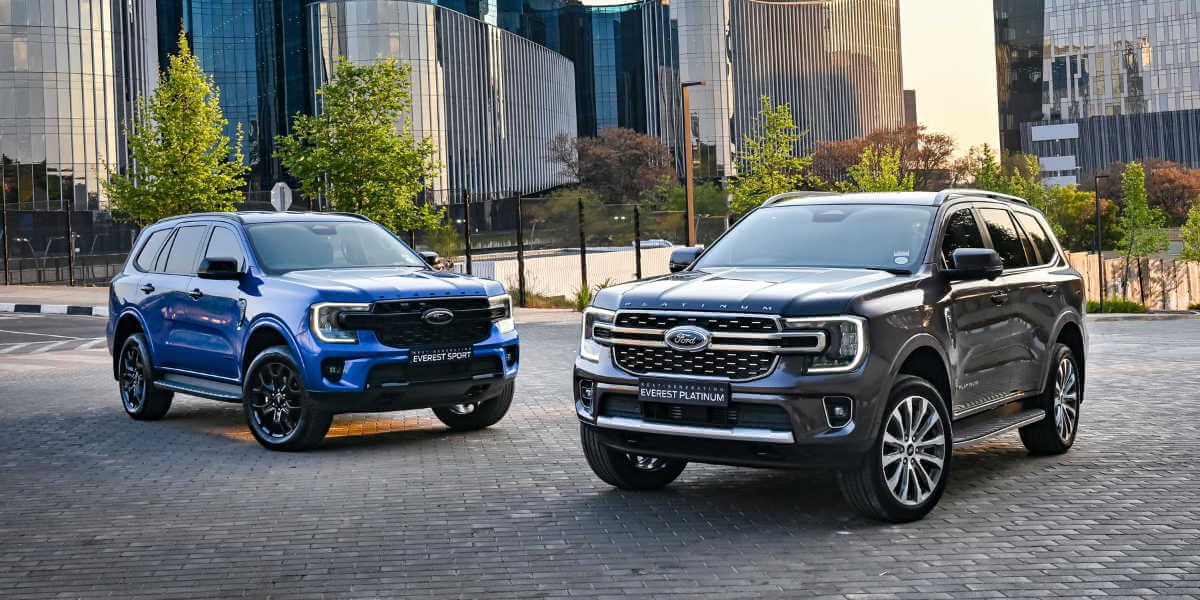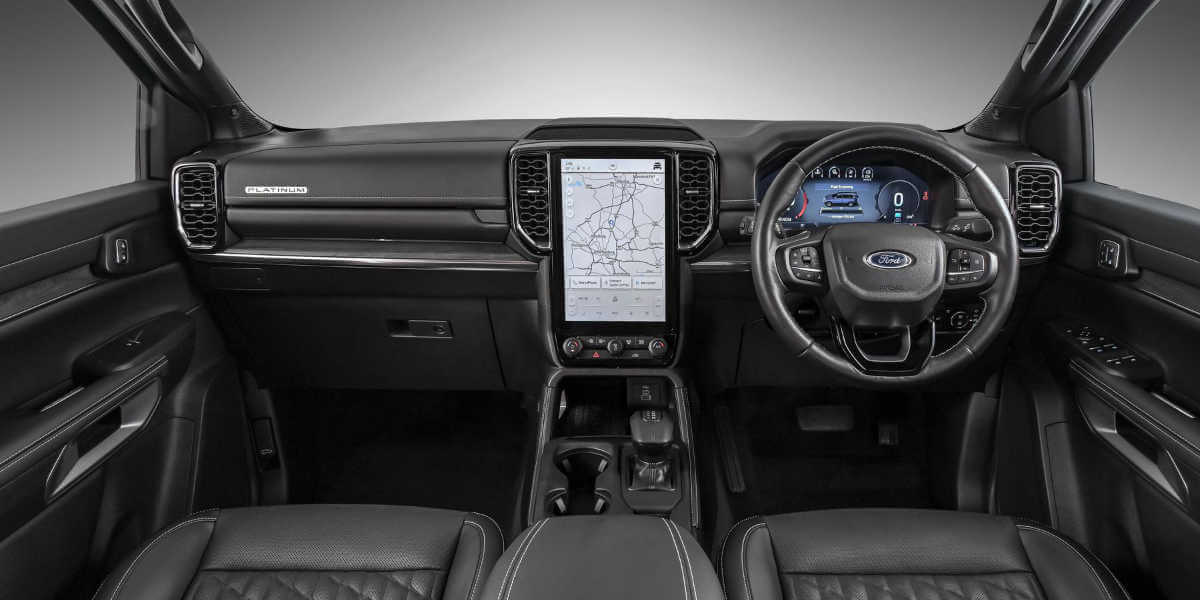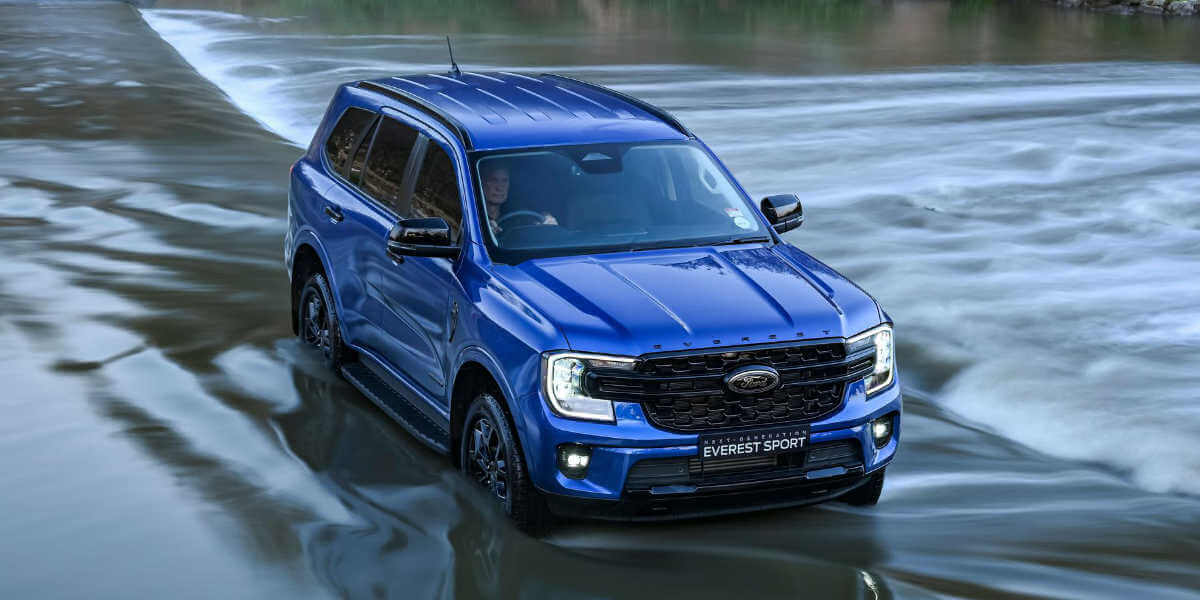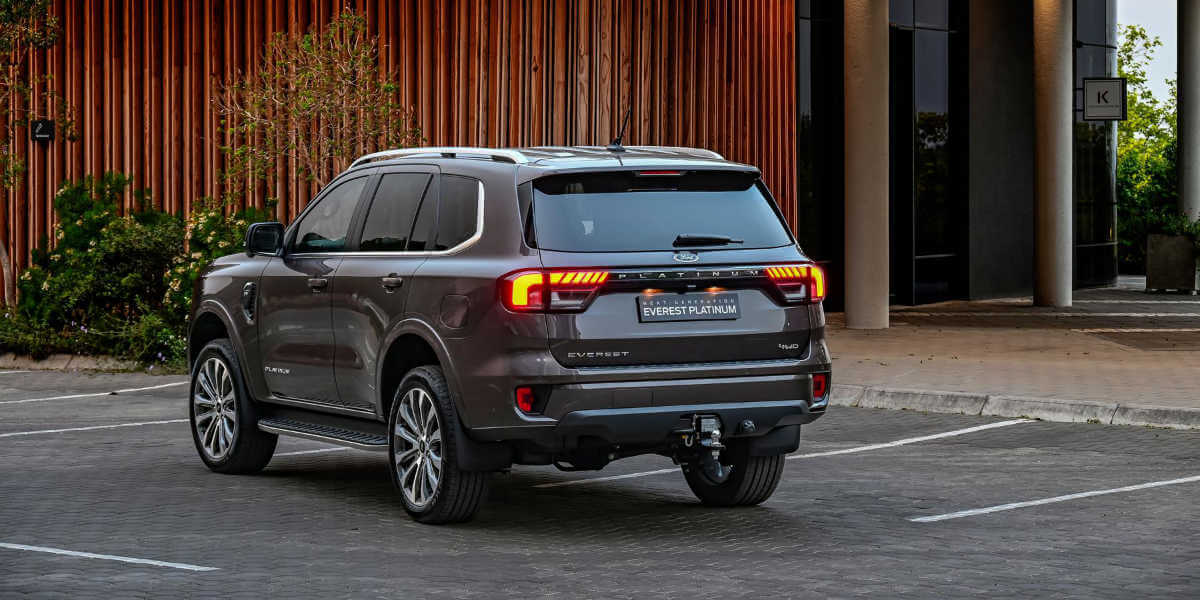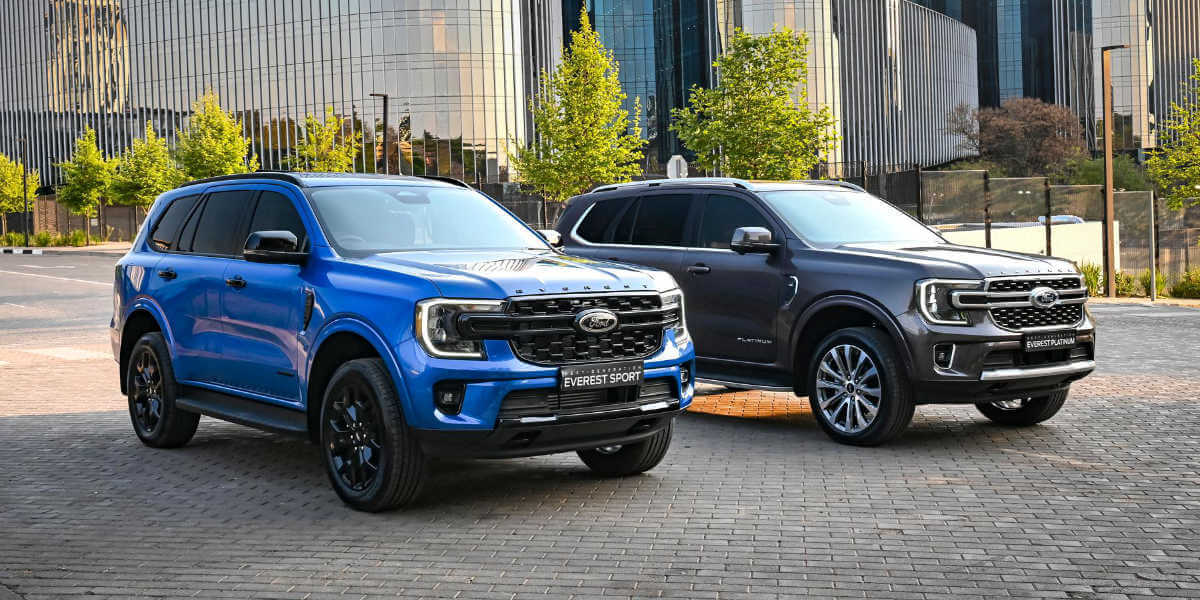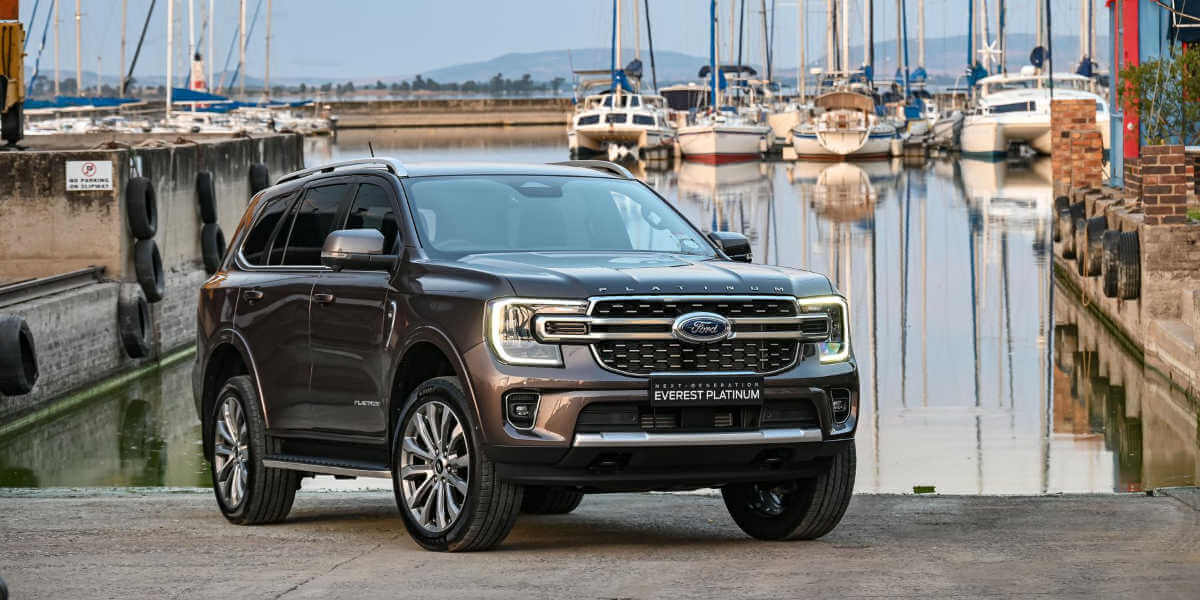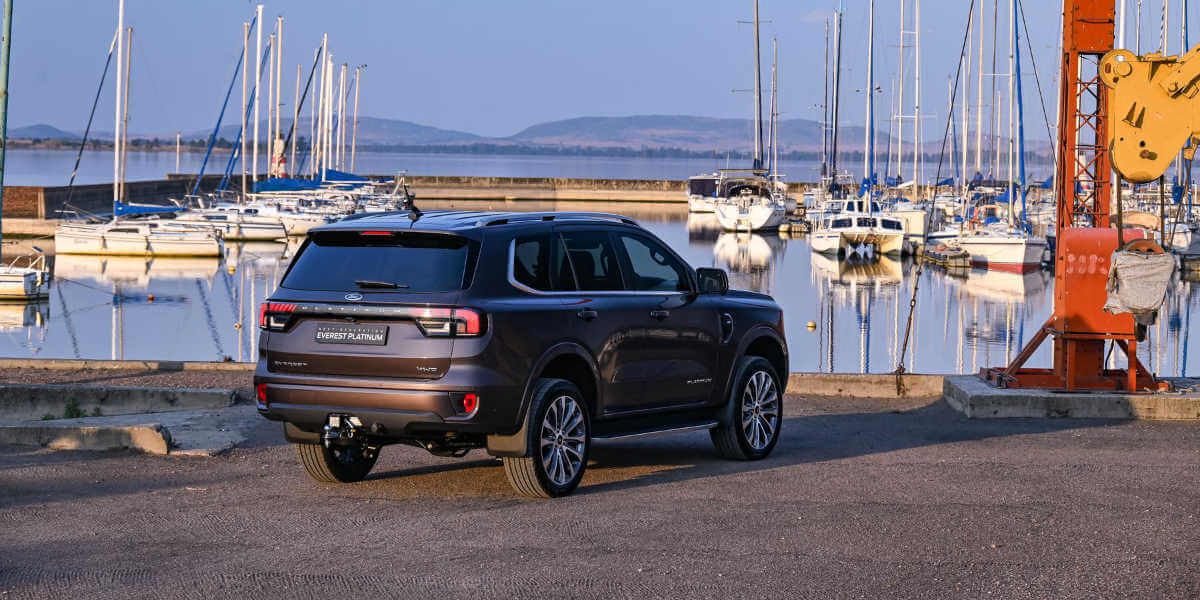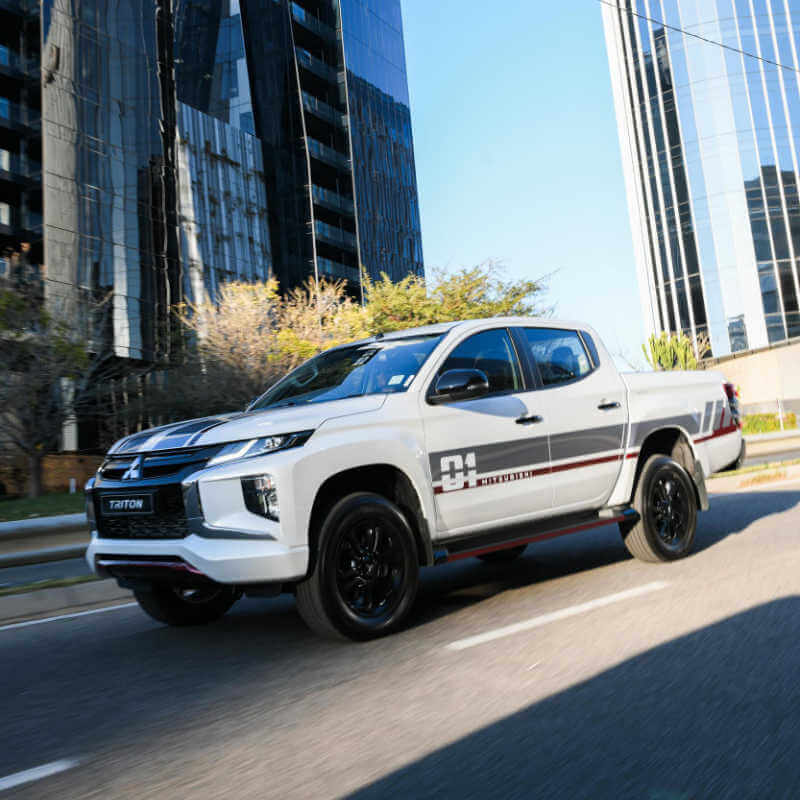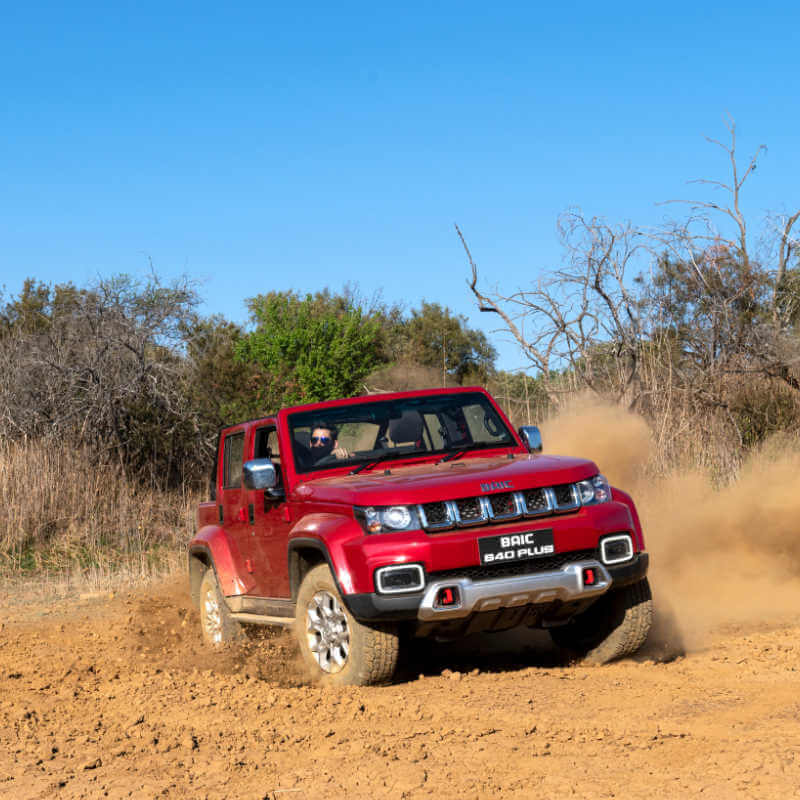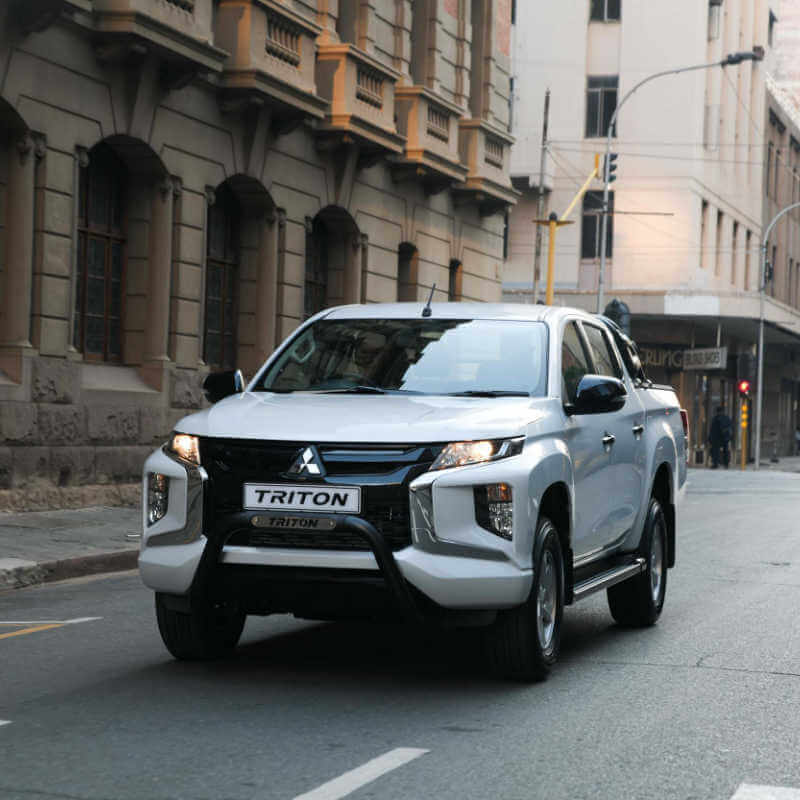Next-Generation Ford Everest
The Next-Generation Ford Everest blends adventure-ready capability with exceptional comfort and customer-focused technology in a rugged, refined and fun to drive sport utility vehicle (SUV).
Article by: Ford
Engineered to excite, the Next-Gen Everest has been built for the adventurous – with capability at its core. Inside, premium levels of craftsmanship have created a quiet and refined sanctuary for up to seven occupants, while class-leading technology and safety make every journey more memorable.
“The Next-Gen Everest has been designed with one thing in mind, and that’s our customers,” says Doreen Mashinini, General Manager for Marketing at Ford South Africa. “Everest owners are people who like adventure, recreation and being able to go out with family and friends. Whether they’re conquering sand, rocky paths or city life, these customers appreciate the utility, capability and spaciousness of an SUV, and this is where the Next-Gen Everest excels by being tough on the outside, while providing a sanctuary on the inside matched to amazing capability underneath.”
Two grades of the Next-Gen Ford Everest are available at launch, headlined by a new flagship grade: the Everest Platinum which takes luxury and performance to new heights. It features the new 3.0-litre V6 turbodiesel engine and Ford’s advanced 10-speed automatic, linked to a permanent all-wheel drive system.
Customers also have the choice of the Everest Sport which is powered by the proven 2.0-litre Bi-Turbo diesel engine, matched to the 10-speed auto. It uses an electronic shift-on-the-fly part-time four-wheel drive system.
Rugged outside, a sanctuary within.
The Next-Gen Ford Everest is unreservedly sleek and modern, with a wider track and longer wheelbase enabling designers to create a more progressive, muscular appearance. Ford’s global design DNA is reflected in the C-clamp headlamps and strong horizontal upper grille bar. The front end also has a mix of horizontal and vertical elements, which add to the stable appearance.
On the sides, there is a strong shoulder line front to back, while the wider track results in a more dramatic swell over the wheels, enhancing the strong and modern look.
It may be tough and rugged on the outside, but what customers want on the interior is a different story. Inside, they want a sanctuary.
“One of the first things you’ll notice when you get into the Next-Gen Everest is how quiet it is,” Mashinini says. “The high-quality and refined interior has been carefully designed to be a quiet place in which you can easily talk to your family or friends and enjoy the journey together.”
Designers also put a lot of thought into the function and feel of the interior, taking inspiration from modern homes and bringing in plush materials, premium finishes and ambient lighting all in areas where customers can appreciate them the best. Everest’s sense of spaciousness is amplified by the full-width coast-to-coast instrument panel and centre console with dual cupholder recesses, plus dash-mounted ‘pop out’ cupholders for front seat occupants.
Comfort and convenience are raised to even greater heights, with the inclusion of standard integrated wireless charging, an electric parking brake and a svelte new leather trimmed e-Shifter on the range-topping Everest Platinum. As befitting its flagship status, the top-spec model is also equipped with heated and ventilated 10-way power adjustable front seats, with memory function for the driver. Even the second-row seats are heated to cope with brisk winter mornings.
Access to the third-row seats is much easier thanks to second-row seats that slide further forward than before. Additionally, all occupants now have more places to store their things, while charging devices is a breeze with power outlets in all three rows. This includes a windscreen-mounted USB charging port, Type A and Type C USB ports in the front and centre consoles, along with 12-volt sockets up front, for the third-row occupants and in the luggage compartment. The Platinum is further equipped with a 400-Watt inverter for powering laptop computers and other devices.
Ford has prioritised flexible seating in the Next-Gen Ford Everest; the second-row slides with a 60:40 split seatback, and the 50:50 split third row in the seven-seater configuration can be folded at the touch of a button on the Platinum series. Importantly, both the second- and third-row seats have been designed to fold flat to allow for long loads to be carried safely.
To stop items falling out of the back when the tailgate is lifted, the design team created a small lip, affectionately known as the “apple catcher” valley, at the rear of the cargo area. The team also created an underfloor storage space that helps keep the rear of the Everest organised.
Customer-focused technology.
In addition to a more refined and comfortable interior, Ford focused on incorporating the latest connectivity and technology features into the Next-Gen Ford Everest. In place of traditional analogue clusters, the Sport comes with an 8-inch digital instrument cluster, with an engaging 12.4-inch version on the Platinum. Both models boast a large, high-resolution portrait 12-inch touchscreen.
Next-Gen Everest is loaded with Ford’s latest SYNC® 4A system, which comes customer-ready with its voice-activated communications, entertainment and information systems. Linked to the wireless charging functionality, the system also incorporates wireless Apple CarPlay and Android Auto to seamlessly integrate your smartphone functionality.
Additionally, there’s an embedded factory-fitted modem, allowing customers to connect to their vehicle when linked with the FordPass™ App. FordPass enhances the ownership experience with features like remote start, vehicle status check and health alerts, vehicle locator and remote lock and unlock functions via your mobile device.
On the top-spec model, the portrait-orientated screen also is linked to a 360-degree camera with split-view display to make parking a breeze in tight urban spaces or to assist when negotiating particularly tricky terrain while out exploring.
New and proven engine line-up.
Everest customers told Ford that they wanted more power and torque for towing, carrying heavy loads and off-roading, so the team selected Ford’s proven 3.0-litre V6 turbodiesel engine and refined it for the Everest, making it a perfect range-topping match for the Platinum derivative with 184kW of power and a hefty 600Nm of torque.
“This incredible engine really delivers that big-engine torque and power customers want,” Mashinini says. “It feels really tough in the sense that it’s got endless power and torque, but it is also refined and quiet on the road.”
While the new 3.0L turbodiesel V6 spearheads the line-up, the Next-Gen Everest Sport is equipped with the proven 2.0-litre Bi-Turbo diesel engine that produces 154kW and 500Nm and is renowned for its refinement and efficiency. Both engines are mated to Ford’s advanced 10-speed SelectShift automatic transmission.
Engineered for adventure.
A 50mm increase in next-gen Everest’s track helps deliver a more controlled ride on-road, while tweaks to damper settings allowed the team to inject more fun and control into the Everest’s ride in all conditions.
“Everest was always well regarded for its plush ride on and off-road, but the track increase allowed our dynamics team to create a greater connection between vehicle and driver, with a more controlled fun to drive ride around town and on the highway,” Mashinini says.
Want to do some exploring? Next-Gen Everest is ready to go, with a choice of two four-wheel drive systems, underbody protection and off-road selectable drive modes plus rear locking differential, two functional tow hooks upfront, and upfitter switches for accessories.
The Everest Sport relies on a part-time electronic shift-on-the-fly four-wheel drive system, which includes 2H, 4H and 4L modes for tricky off-road conditions. Sure-footed performance is a hallmark of the Everest Platinum regardless of the terrain, with the adoption of an advanced permanent four-wheel drive system that additionally features a default 4A (Auto) mode that can be used on and off-road. It constantly adjusts the flow of drive between the front and rear axles for enhanced traction for even greater peace of mind.
Everest’s dedicated off-road screen displays vehicle information and a front camera view of the terrain ahead, with predictive overlay guidelines designed to help the driver negotiate obstacles. With a single button press, the driver can view their driveline and diff-lock indicators, steering angle and guides, along with vehicle roll and pitch angles.
Next-Gen Ford Everest has a water wading ability up to 800mm and a maximum braked trailer towing capability of up to 3 500kg (an increase of 400kg over the outgoing model), while space in the engine bay of the Everest Sport allows for a second battery to power aftermarket accessories.
With the twist of a dial or push of a button, next-gen Everest customers can choose from up to six drive modes designed to improve on and off-road comfort and capability. The drive modes are: Normal, Eco, Tow/Haul, Slippery, Mud & Ruts, and Sand.
The selectable drive modes dovetail into the raft of other technologies designed to enhance capability, such as the electronic rear differential lock which can be activated via the dedicated SYNC off-road screen, Hill Descent Control, and the front camera view with steering overlays which displays on the large-format infotainment screen.
Everest’s impressive towing capability is supported by smart technologies that make towing easier. The dedicated Tow/Haul drive mode has been tuned to optimise gear shift timing to maintain the best power delivery and engine braking when carrying loads, either in a trailer or in the cargo area.. Everest’s new camera views help owners guide their SUV into position to connect a trailer, while integrated SYNC features such as trailer connection checklist and trailer light check help make the job easier.
The new integrated or stand-off roof rails are more than just a design detail; they’re engineered for adventure. The Everest rooftop can now support static loads of up to 350kg and dynamic loads of up to 100kg, providing increased versatility that enables it to carry bikes, canoes, cargo pod or roof-top tent. A universal mounting system allows customers to equip their vehicle with a range of accessories.
Confidence-inspiring driver assist technologies.
Everest comes loaded with new and enhanced driver assist technologies and safety features that are designed to take the stress out of driving and help drivers to remain focused.
Active Park Assist 2.0 on the Everest Platinum can help the driver fit safely in tight spaces at the press of a button. The system takes care of the steering, gearshifts, acceleration and braking to navigate into parallel or perpendicular parking spaces with ease. It will also steer itself out of a parallel parking spot when prompted.
New to Everest is Ford’s latest-generation adaptive cruise control system, fitted as standard on the Everest Platinum. Adaptive Cruise Control with Stop & Go and Lane Centering is able to detect lane markings and help keep the vehicle centred in the lane.
Both the Sport and Platinum models are equipped with Ford’s Lane Keeping System, which includes Lane Keeping Alert and Lane Keeping Aid, along with Road Edge Detection and Driver Warning. Pre-Collision Assist with Dynamic Brake Support, Forward Collision Warning, Automated Emergency Braking and Reverse Brake Assist further up the arsenal of innovative safety features. Additionally, the Platinum gains Distance Alert and Indication, Evasive Steer Assist and Intersection functionality.
Pricing (include VAT).
- Everest Sport 2.0L BiT 4WD 10AT R 965 400
- Everest Platinum 3.0L V6 AWD 10AT R 1 113 100
Included as standard is Ford Protect comprising a four-year/120 000km warranty, four-year/unlimited distance Roadside Assistance and five-year/unlimited distance corrosion warranty. The recommended service interval is 15 000km or annually, whichever occurs first.
Customers have the option of purchasing service or maintenance plans up to eight years or 135 000km. The warranty can be extended up to seven years or 200 000km, while the Roadside Assistance can be extended for an additional one or two years.
“We are already seeing a high demand around the world for Next-Gen Everest, and we are confident that this new model will live up to expectations for all those who have reserved a vehicle. However, global supply chain challenges, including shipping logistics, are causing extended wait times across the industry,” says Neale Hill, President, Ford Motor Company Africa Region.
“Our local and global teams are working around the clock to get vehicles to dealers and customers as soon as possible,” concludes Hill.

